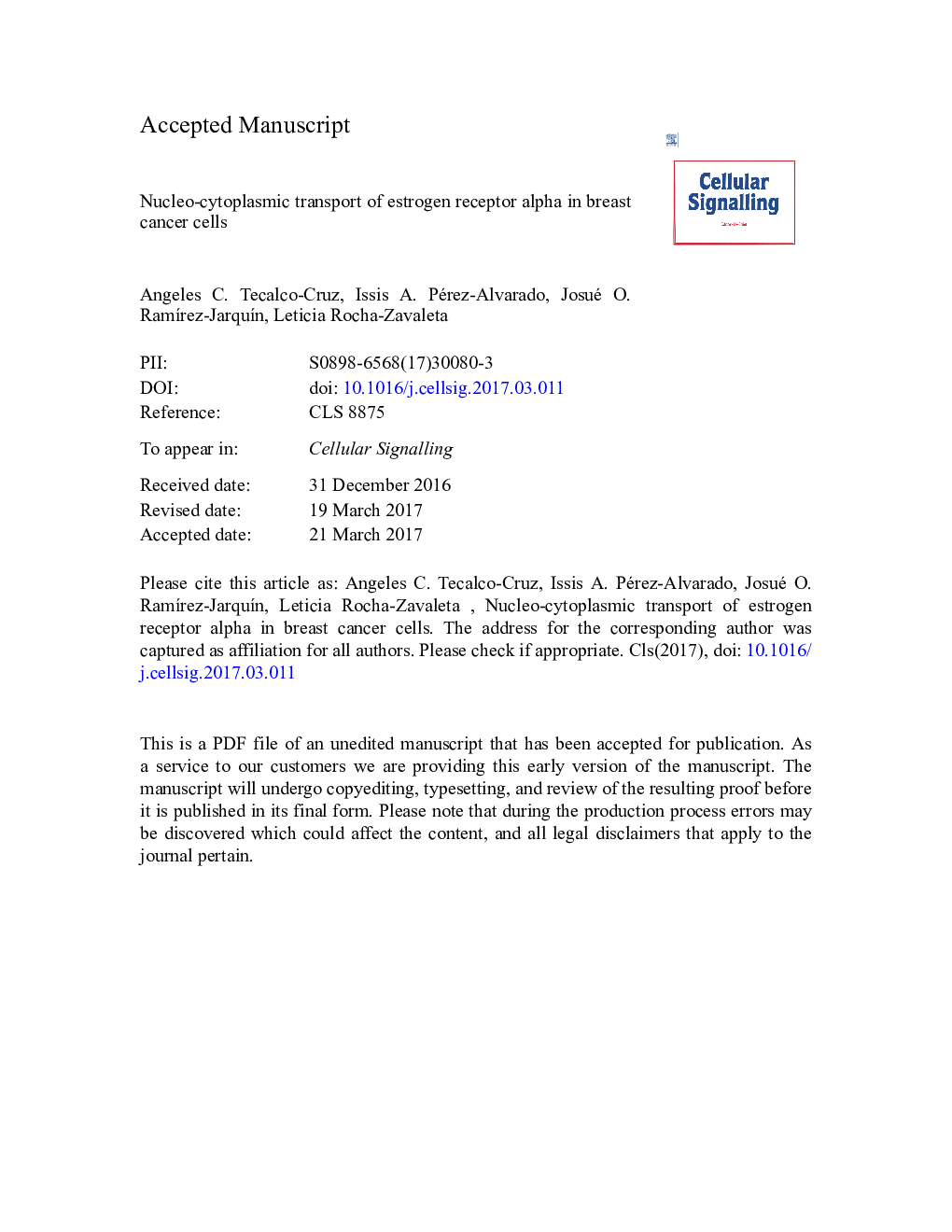| Article ID | Journal | Published Year | Pages | File Type |
|---|---|---|---|---|
| 5509354 | Cellular Signalling | 2017 | 39 Pages |
Abstract
Approximately 70% cases of breast cancers exhibit high expression and activity levels of estrogen receptor alpha (ERα), a transcription regulator that induces the expression of genes associated with cellular proliferation and survival. These nuclear functions of the receptor are associated with the development of breast cancer. However, ERα localization is not static, but rather, dynamic with continuous shuttling between the nucleus and the cytoplasm. Interestingly, both the nuclear import and export of ERα are modulated by several stimuli that include estradiol, antiestrogens, and growth factors. As ERα nuclear accumulation is critical to the regulation of gene expression, nuclear export of this receptor modulates the intensity and duration of its transcriptional activity. Thus, the subcellular spatial distribution of ERα ensures tight modulation of its concentration in cellular compartments, as well as of its nuclear and extranuclear functions. In this review, we will discuss current findings regarding the biological importance of molecular mechanisms of, and proteins responsible for, the nuclear import and export of ERα in breast cancer cells.
Keywords
PI3Kcrm-1MNARDynein light chain 1E6APE6-associated proteinDLC1LMBFULSERMNupsFulvestrantCHCNLSNPCERαnESLBDDBDHSP90HDACHER2hsp70EREEGFSERD17-Beta-estradiolIgf1TAMtamoxifenNuclear export sequenceDNA-Binding Domainligand-binding domainnuclear localization sequenceretinoblastomaBreast cancerNuclear exportepidermal growth factorEstrogen responsive elementinsulin-like growth factor 1Phosphatidylinositol 3-kinaseLeptomycin Bnuclear pore complexSelective estrogen receptor modulatorNucleoporinschromosome region maintenance 1histone deacetylasesHistone acetyltransferaseNuclear importheat shock protein 70Heat shock protein 90HATEstrogen receptor alphaUPS
Related Topics
Life Sciences
Biochemistry, Genetics and Molecular Biology
Biochemistry
Authors
Angeles C. Tecalco-Cruz, Issis A. Pérez-Alvarado, Josué O. RamÃrez-JarquÃn, Leticia Rocha-Zavaleta,
